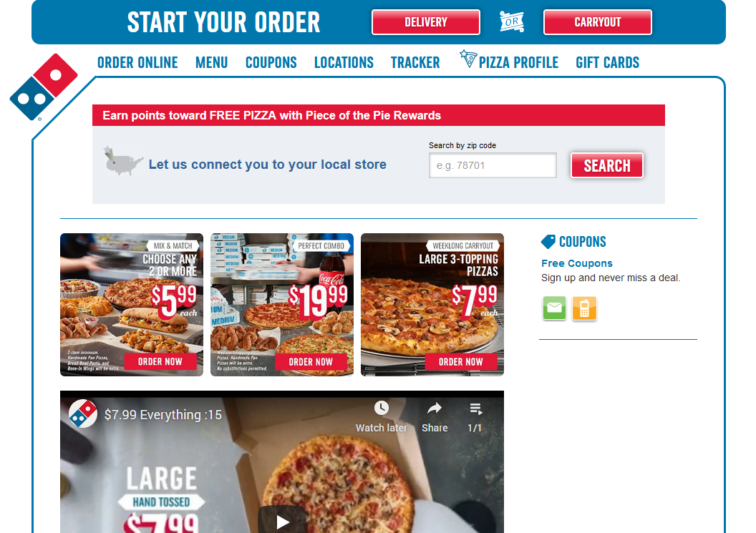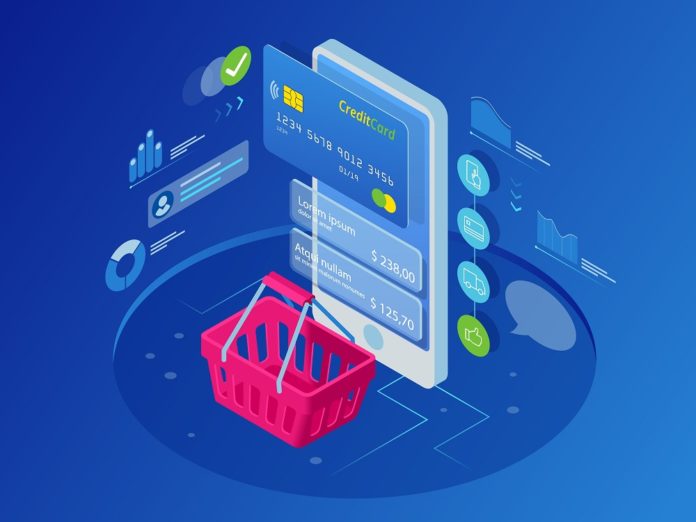Global E-Commerce has been rising at a fast pace for the past several years now. But it’s about to break all the records now. In 2021, it’s expected to reach the mindboggling figure of $4.88 trillion.
With mobile commerce driving a large part of this rate, both directly and indirectly, it is important to keep smartphones in mind when creating or strategizing your marketing or sales efforts.
But what other trends will make their presence known in E-Commerce success in 2020. Let’s take a look.
Read More: Impact Of Web Development On E-Commerce (Infographic)
1. Sustainable Branding in E-Commerce
Sustainable branding is about business practices that result in environmental improvement, social improvement, and economic improvement. Needless to say, these improvements must be translated to impacting people’s overall lives for good. The drive towards sustainable business has been gathering speed for a while, but in 2020 we’ll see its largest impact. More and more customer segments now require their brands to be more than just about goods and services. They want the brands to take stands, make changes, and create good using their influence and power.
To do that, sustainable brands must incorporate their ideology in their visual identity too. When people look at you (your logo) they should immediately be able to think of you as a sustainable, eco-friendly company. There is where sustainable design enters. It includes using colors, typefaces, and other elements of design that are visually connected to ecology. Green features the most in such logos. The typefaces used look wholesome, conscious, involved, and organic. “So Just Shop”, a sustainable jewelry brand and its logo of a pair of hands, sweetly cradling the most representative word in the brand name: “just”.

Here is another example: With muted colors that are easy on the eyes, you can create an image of comfort, nature, and care through this E-Commerce logo design. The cloud shape adds another layer of meaning in the sustainable design while the dollar sign in the middle gets the business message across.

So in 2020, as you prepare to create a successful sustainable brand, make sure it comes across both in your practices and your visuals, too.
2. Think Global
While as a new business you may think you first need to capture the local market, ceaseless innovations in business and technology have essentially made the whole world your potential customer base. So take advantage.
According to Forrester, cross-border E-Commerce is expected to reach $627 billion by 2022 – a fifth of global E-Commerce. So start thinking global and consider the many available tools that’ll help you in your quest:
- Multiple currency checkouts
- Translation feature activated by default depending on geolocation
- Ability to break down delivery locations from province/state to city, town, and locality, etc.
3. Augmented Reality For Personalized Experiences
Augmented Reality is going to be a force to be reckoned with in the current decade. It’s expected to reach $61.39 billion by 2023 alone. Be prepared to watch as AR enables brands to provide a personalized and enhanced shopping experience to the customers. They not only see it as fun but feel it adds to the whole experience by helping them to visualize the product in more than one way.
The Finnish technology startup, SmartCart, enables intelligent shopping cart solutions for retail stores. The AI-enabled cart tech helps customers navigate, find products, explore recipes, and avail deals/discounts on the go using a mobile device.
Augmented Reality not only works in physical stores but can be used on your desktop or other smart screens. Through this, you let your customers try how a particular shirt may look on them, how their new furniture will look in the new place, which lip colors from Sephora suit them more than the others.
Twiggle is an AI-powered solution for retailers to empower online shoppers to search, explore, and order products online from the comfort of their couch. The service brings in-store experience online through an intuitive and intelligent virtual assistant.
4. QR Code Payments
Another trend that’s curiously making its presence known is QR Code payments. It is a form of mobile payments, and while no one (myself included) expected QR codes to become this big so soon, we should have known better. As mobile commerce is at an all-time high, consumers making purchases through their smart devices need smart and quick, and secure payment methods to shop online. And QR codes provide all that.
They’re easy to scan, process immediately, and come with tight security.
In 2019, 40% of all internet users made payments through a QR code on their mobile devices every month. The codes are especially popular for ride-sharing or ride-hailing apps, online food deliveries, online shopping, and many others.
5. Rise of Voice Commerce
Voice commerce is gathering pace as more and more consumers – 55% of all online consumers – start using their smart speakers (Apple’s HomePod, Amazon’s Echo, and Google Home) to do more than just ask them to play their favorite songs or chat for fun. Powered by highly sophisticated voice recognition software that’s always improving, these home assistants are now increasingly being used to order food and groceries online, purchase low-cost and low-risk electronics and other household items for the routine use.
Why low-cost only? Because the lack of visuals adds a risk factor in making costly purchases. But as Augmented Reality continues to become refined and technology, on the whole, continues to innovate itself, we are not far away from making riskier purchases through our digital home assistants, too.
As an E-Commerce store, it is your responsibility – if you want to remain a viable brand – to incorporate capabilities in your store that aid voice commerce integration. Clear and concise product descriptions, color labels and similar features will aid the process remarkably.
6. Omnichannel Stores
In 2020, E-Commerce is going to be more than electronic. Customers want a more unified shopping experience. They like something online but they want to physically see and experience it. Hence, omnichannel shopping stores.
Stores that provide multiple experience points stand to gain the most from this demanding market segment which is growing every day. Consider it an opportunity to forge deeper connections with your customers. Let them experience who your team is, how you conduct business behind the screen, and your brand personality in action.
Factors that customers expect you to possess as an omnichannel brand:
- Seamless customer services, including talking to the same representative that they had talked to previously.
- Easily accessible inventory information so they can make purchases accordingly.
- Buy online and pick up in-store facility
- Knowledgeable sales associates, and
- Customer data shared centrally so customers don’t have to repeat themselves from one channel to the next.
7. Accessibility Is a Priority
Last year in October, Domino’s lost a lawsuit against a blind man, Guillermo Robles, over how the company’s website wasn’t accessible to the disabled. Denying Domino’s stance, the Court noted that it was essential for all businesses with physical locations to make their websites and other online platforms accessible for people with disabilities.

While this law only applies to businesses with physical locations, it is important to note that there are other laws governing accessibility guidelines in the digital world.
Accessible design dictates that for a digital interface to be truly complete and useful, it has to cater to a wider range of audience with inclusivity and ease-of-access in mind. It must cater to people with vision challenges, cognitive disabilities, and other issues that might make it difficult for them to have an optimal experience while on your website.
WCAG 2.0 contains useful guidelines that help you create an accessible design. If you find it confusing, there are some various tools that will help you to figure it out. Plus there are AI managed accessibility tools available that can automatically modify a site’s design as per any new update in the accessibility guidelines.
8. Emotional Connections Will Keep You Afloat
This trend will go hand-in-hand with sustainability branding. The need for customers to do business with brands that are more than just stores is what driving this trend too. Representing a wide range of customers through your brand, taking into account their diverse needs regarding your products, and maintaining close ties with them through shared values is what will keep brands afloat this year – and –many years to come.
“Universal Standard” is one of the brands way ahead of many in this regard. The apparel brand respects its customers at such an individual and human level which is very difficult for bigger and more established brands to emulate – especially those that have made a name for themselves for being elite or exclusive. Compared to them, Universal Standard is more conscious, wiser, authentic, and necessary.
Through its Fit Liberty program, the brand asks women to ‘Shop for the woman in the mirror, not the number on the label’. Such relatability will be much valued from customers and will be a major force behind conversions, customer retention, brand loyalty, and brand advocacy.
Over to you …
Through this article, I have hoped to present to you some of the most viable trends that you could be following to enjoy greater success in 2020. However, in no terms, this list is exhaustive or indicative of what trends will work best for your business. Use this list to educate yourself and guide your marketing strategy but be the best judge when it comes to implementation, and only lead with trends that make real sense to you and that you can carry on as a part of your larger brand strategy.









